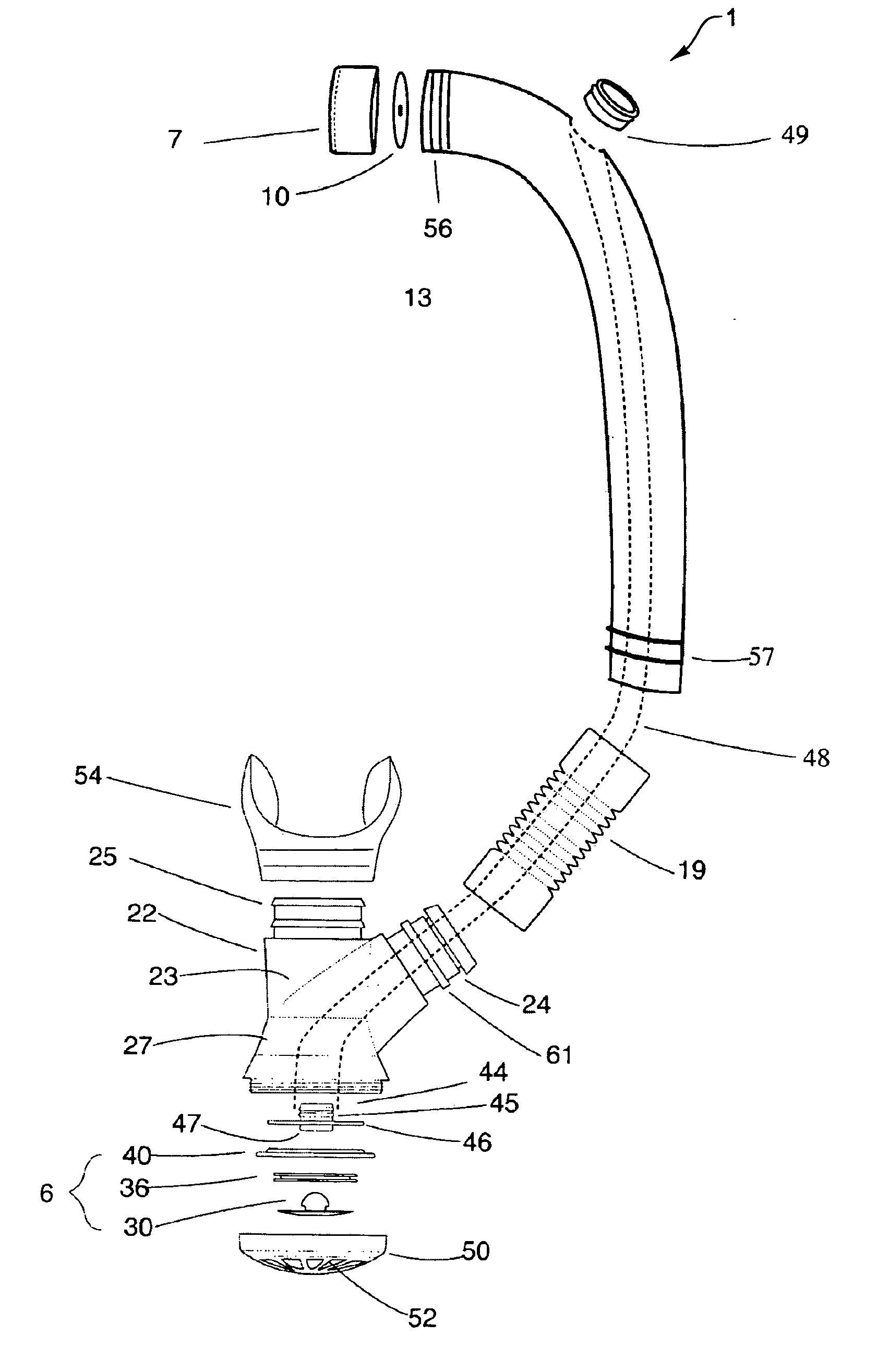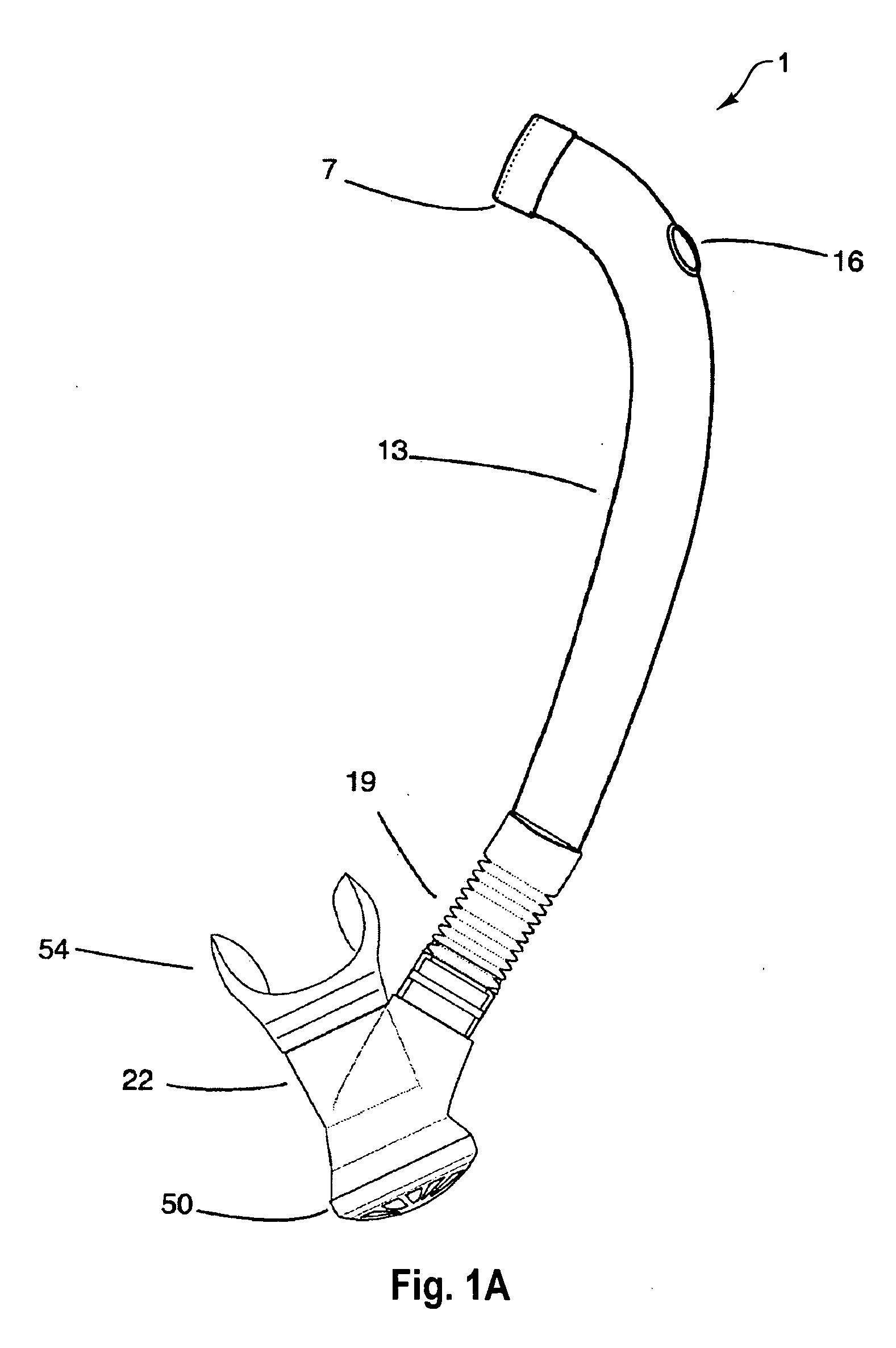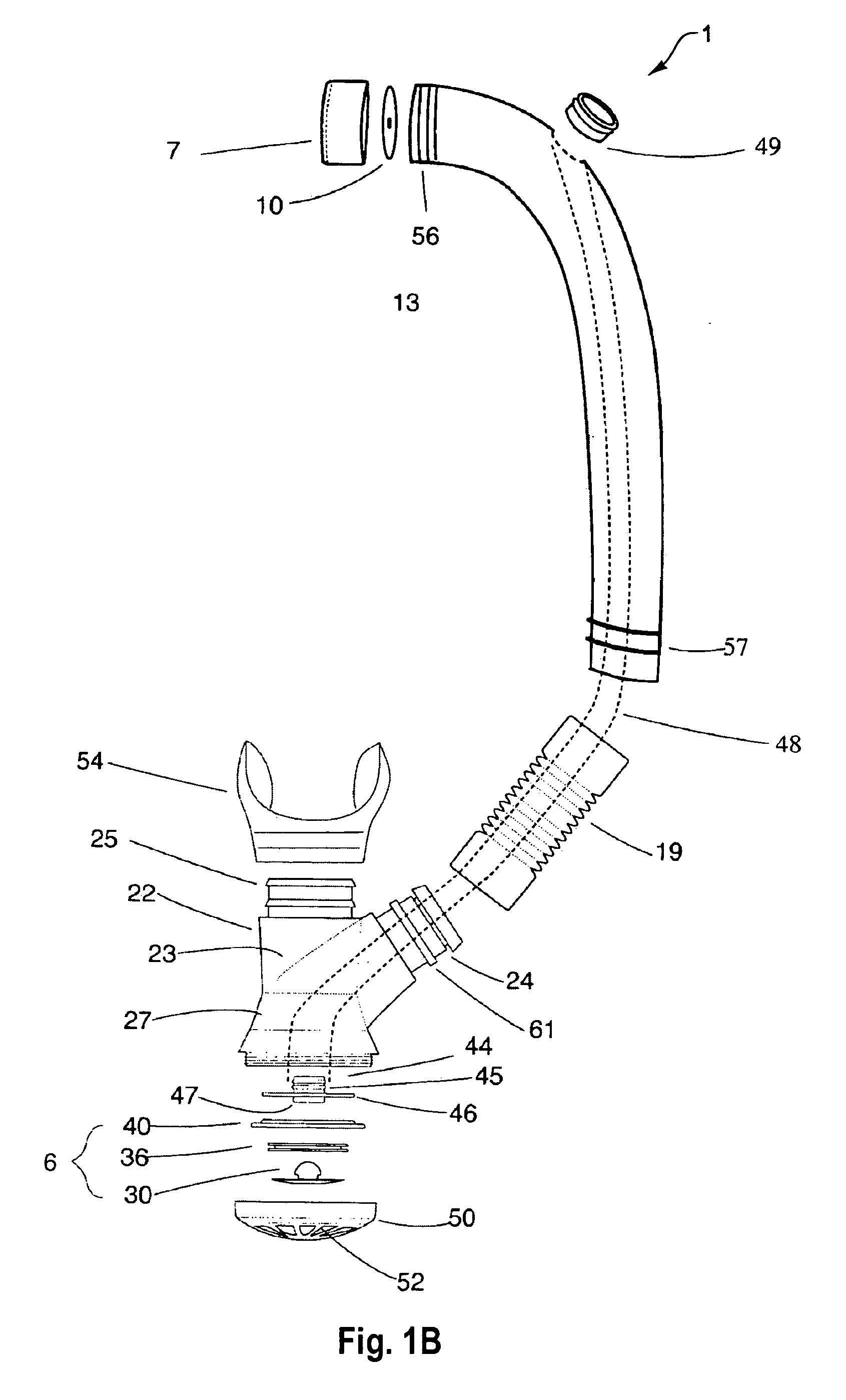Exhalation valve for use in an underwater breathing device
a technology of underwater breathing and exhalation valve, which is applied in the direction of valve operating means/releasing devices, functional valve types, and underwater equipment, etc., to achieve the effect of reducing the overall work of underwater breathing
- Summary
- Abstract
- Description
- Claims
- Application Information
AI Technical Summary
Benefits of technology
Problems solved by technology
Method used
Image
Examples
Embodiment Construction
[0056] This invention is generally directed towards an exhalation valve for use in an underwater breathing device. The exhalation valve that is configured to produce positive end-expiratory pressure in the airway of a user of the underwater breathing device. The principles of the present invention, however, are not limited to underwater breathing devices. It will be understood that, in light of the present disclosure, the structures disclosed herein can be successfully used in connection with any device that is intended to produce positive end-expiratory pressure in the airway of a user.
[0057] Additionally, to assist in the description of the exhalation valve, words such as top, bottom, front, rear, right, left and side are used to describe the accompanying figures, which are not necessarily drawn to scale. It will be appreciated, however, that the present invention can be located in a variety of desired positions within an underwater breathing device or other device—including vari...
PUM
 Login to View More
Login to View More Abstract
Description
Claims
Application Information
 Login to View More
Login to View More - R&D
- Intellectual Property
- Life Sciences
- Materials
- Tech Scout
- Unparalleled Data Quality
- Higher Quality Content
- 60% Fewer Hallucinations
Browse by: Latest US Patents, China's latest patents, Technical Efficacy Thesaurus, Application Domain, Technology Topic, Popular Technical Reports.
© 2025 PatSnap. All rights reserved.Legal|Privacy policy|Modern Slavery Act Transparency Statement|Sitemap|About US| Contact US: help@patsnap.com



